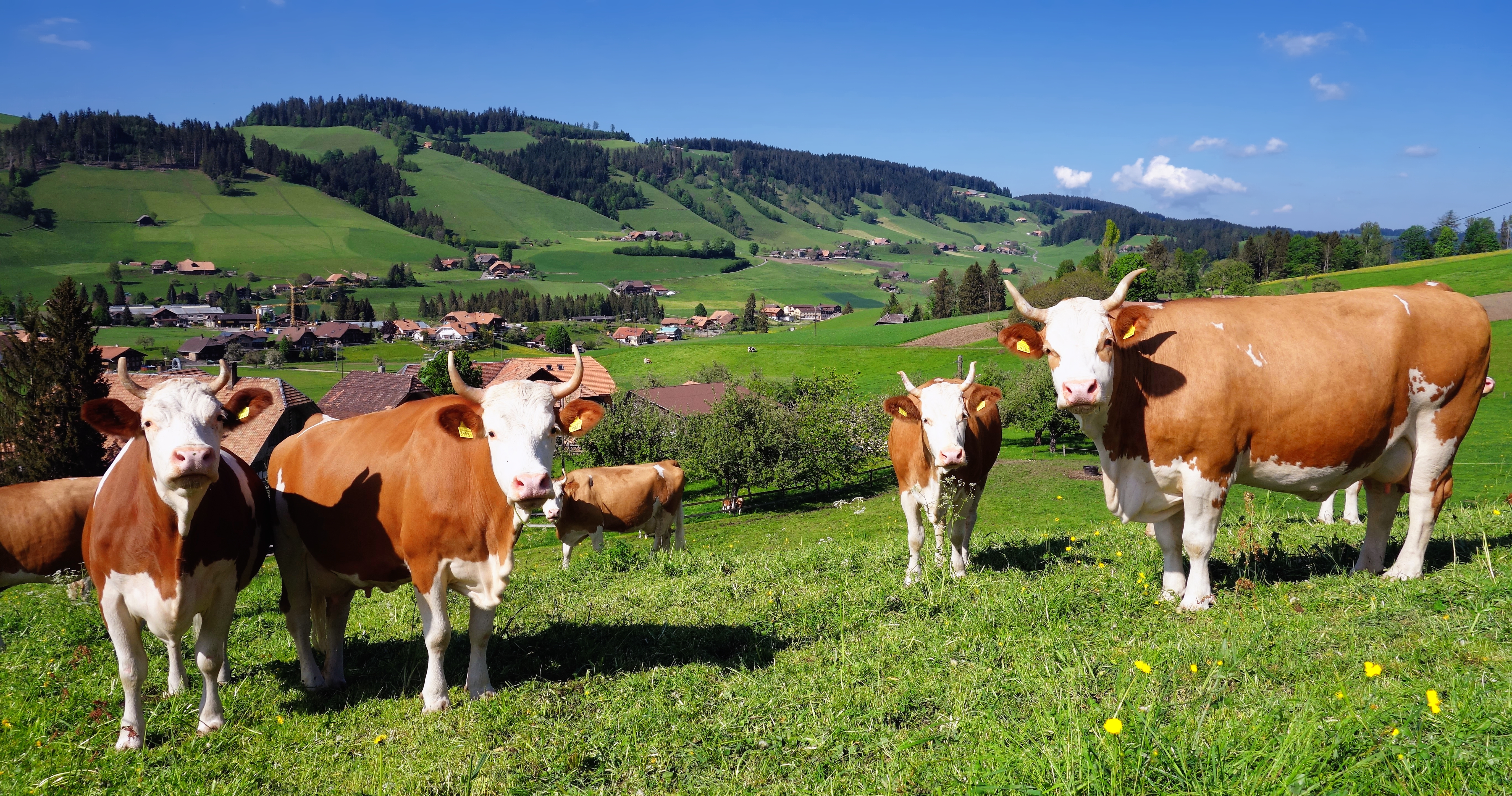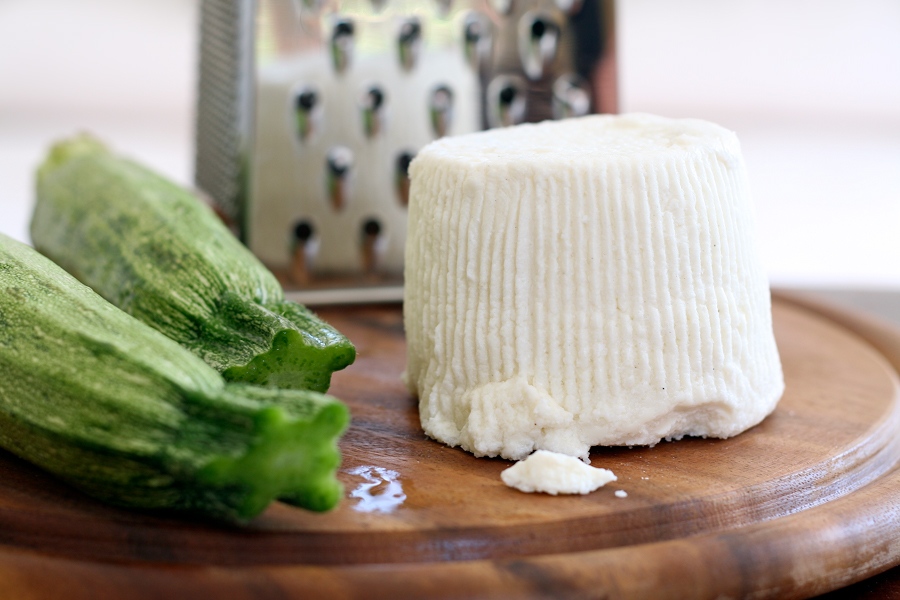|
Ziger
Ziger (German), Sérac (French) or Ricotta (Italian), is a group of fresh cheeses produced in Switzerland. Ziger is nationally widespread as it is the by-product of the manufacture of hard Swiss-type cheeses, such as Gruyère and Emmental. Made of whey, it is rich in proteins and it is historically a staple food in the Alpine regions. History Ricotta production has been documented in Italy back to the Bronze age. The name "ricotta" ("boiled again") refers to the use of whey that remains after the production of cheese; the whey is acidified and boiled again and the proteins still contained in the whey (lactoglobulins; casein is no longer there) coagulate and precipitate as curds. The French term ''sérac'' or ''séré'' is mentioned among other cheeses in a Gruyère document dating from 1312. In Valais, it is mentioned in a document from 1437. This appellation, however, might have been associated with another type of fresh cheese which was not a by-product but a domestically mad ... [...More Info...] [...Related Items...] OR: [Wikipedia] [Google] [Baidu] |
Schabziger
Schabziger () or sapsago is traditional cheese exclusively produced in the Canton of Glarus in Switzerland. Schabziger is made out of skimmed cow milk and a special kind of herb, blue fenugreek ('' Trigonella caerulea''), also called blue melilot. The milk and melilot sap are heated to then an acid (lactic, citric or acetic) is added causing curdling. The whey and curd are separated. The whey is further curdled at and separated. The whey-condensate is called ''Ziger'' and is pressed into cones for 6 to 8 days. The cones are then dried for 2 to 6 months. The resulting cheese is hard, green with a strong flavor and aroma. It is usually conditioned as cones of with a height of . It contains less than 3% fat. Schabziger is usually eaten grated, or mixed with butter to make an herb spread ("Ankeziger", "Zigerbutter") that is put on bread or sandwiches. It can also be used in fondue (''Zigerfondue''), or grated and eaten with noodles (''Zigerhörnli'') or rösti. A cone of Schabz ... [...More Info...] [...Related Items...] OR: [Wikipedia] [Google] [Baidu] |
Swiss Cheeses
Switzerland has a strong and ancestral dairy farming and cheesemaking tradition. The breeding of cattle, sheep and goats for milk is attested in the Neolithic period and, since Antiquity, cheese has been exported from the Alpine regions. The rugged nature of the country makes approximately 80% of the agricultural land unsuitable for cultivation, which is therefore mainly exploited for cattle and sheep farming. This mode of exploitation has forged a large part of the Swiss landscape, in the Alps, the Jura and on the Swiss Plateau. Today, cheese dairies and mountain pastures in Switzerland produce nearly 500 varieties of cheese, not counting fresh cheeses. Most of these, and all the ones very well known internationally, are semi-hard Alpine or Swiss-type cheeses such as Emmental and Gruyère. Dairy products in general are highly appreciated throughout the country, with butter and cream being classic ingredients of Swiss cuisine. History The breeding of cattle, sheep and goats ... [...More Info...] [...Related Items...] OR: [Wikipedia] [Google] [Baidu] |
Gruyère Cheese
Gruyère (, , ; , ) is a hard Swiss cheeses and dairy products, Swiss cheese that originated in the cantons of Canton of Fribourg, Fribourg, Vaud, Canton of Neuchâtel, Neuchâtel, Canton of Jura, Jura, and Canton of Bern, Berne in Switzerland. It is named after the town of Gruyères in Fribourg. In 2001, Gruyère gained the (AOC), which became the (AOP) as of 2013. Gruyère is classified as a Swiss-type cheeses, Swiss-type or Alpine cheese and is sweet but slightly salty, with a flavour that varies widely with age. It is often described as creamy and nutty when young, becoming more assertive, earthy, and complex as it matures. When fully aged (five months to a year), it tends to have small cracks that impart a slightly grainy texture. Unlike Emmental cheese, Emmental, with which it is often confused, modern Gruyère has few if any Eyes (cheese), eyes, although in the 19th century, this was not always the case. The small cracks that can develop in Gruyère cheese are often ref ... [...More Info...] [...Related Items...] OR: [Wikipedia] [Google] [Baidu] |
Emmental Cheese
Emmental, Emmentaler, or Emmenthal is a yellow, medium-hard cheese that originated in the Emme Valley in Switzerland. It is classified as a Swiss-type cheese. History Emmental cheese originates from the Emme Valley in Switzerland. It has a savory but mild taste. While "Emmentaler" is registered as a geographical indication in Switzerland, a limited number of countries recognize the term as a geographical indication: similar cheeses of other origins, especially from France (as "Emmental"), the Netherlands, Bavaria, and Finland, are widely available and sold by that name. In some parts of the world, the names "Emmentaler" and " Swiss cheese" are used interchangeably for Emmental-style cheese. Production Three types of bacteria are needed to prepare Emmental: ''Streptococcus thermophilus'', '' Lactobacillus helveticus'', and ''Propionibacterium freudenreichii''. Historically, the eyes were a sign of imperfection, and until modern times, cheese makers would try to avoid them. No ... [...More Info...] [...Related Items...] OR: [Wikipedia] [Google] [Baidu] |
Ricotta
Ricotta () is an Italian whey cheese made from sheep, cow, goat, or Italian water buffalo milk whey left over from the production of other cheeses. Like other whey cheeses, it is made by coagulating the proteins that remain after the casein has been used to make cheese, notably albumin and globulin. Ricotta () protein can be harvested if the whey is first allowed to become more acidic by additional fermentation (by letting it sit for 12–24 hours at room temperature). Then the acidified whey is heated to near boiling. The combination of low pH and high temperature denatures the protein and causes it to flocculate, forming a fine curd. Once cooled, it is separated by passing the liquid through a fine cloth, leaving the curd behind. Ricotta curds are creamy white in appearance, and slightly sweet in taste. The fat content varies depending on the milk used. In this form, it is somewhat similar in texture to some fresh cheese variants, though considerably lighter. It is hi ... [...More Info...] [...Related Items...] OR: [Wikipedia] [Google] [Baidu] |
Swiss-type Cheese
Swiss-type cheeses, also known as Alpine cheeses, are a group of hard or semi-hard cheeses with a distinct character, whose origins lie in the Alps of Europe, although they are now eaten and imitated in most cheesemaking parts of the world. Their distinct character arose from the requirements of cheese made in the summer on high Alpine grasslands (''alpage'' in French), and then transported with the cows down to the valleys in the winter, in the historic culture of Alpine transhumance.Donnelley, 3–5; Thorpe, 262–268; Oxford, 15–19 Traditionally the cheeses were made in large rounds or "wheels" with a hard rind, and were robust enough for both keeping and transporting. The best-known cheeses of the type, all made from cow's milk, include the Swiss Emmental, Gruyère and Appenzeller, as well as the French Beaufort and Comté (from the Jura Mountains, near the Alps). Both countries have many other traditional varieties, as do the Alpine regions of Austria ( Alpkäse) and ... [...More Info...] [...Related Items...] OR: [Wikipedia] [Google] [Baidu] |
Milk
Milk is a white liquid food produced by the mammary glands of lactating mammals. It is the primary source of nutrition for young mammals (including breastfeeding, breastfed human infants) before they are able to digestion, digest solid food. Milk contains many nutrients, including calcium and protein, as well as lactose and saturated fat; the enzyme lactase is needed to break down lactose. Immune factors and immune-modulating components in milk contribute to milk immunity. The first milk, which is called colostrum, contains antibody, antibodies and immune-modulating components that milk immunity, strengthen the immune system against many diseases. As an agricultural product, Milking, milk is collected from farm animals, mostly cattle, on a dairy. It is used by humans as a drink and as the base ingredient for dairy products. The US Centers for Disease Control and Prevention, CDC recommends that children over the age of 12 months (the minimum age to stop giving breast milk or Ba ... [...More Info...] [...Related Items...] OR: [Wikipedia] [Google] [Baidu] |
Whey Cheese
Whey is the liquid remaining after milk has been curdling, curdled and strained. It is a byproduct of the manufacturing of cheese or casein and has several commercial uses. Sweet whey is a byproduct resulting from the manufacture of rennet types of hard cheese, like Cheddar cheese, cheddar or Swiss-type cheeses, Swiss cheese. Acid whey (also known as sour whey) is a byproduct brought out during the making of acid types of dairy products, such as strained yogurt. Whey proteins consist of Beta-lactoglobulin, β-lactoglobulin (48%–58%), Α-Lactalbumin, α-lactalbumin (13%–19%), Glycomacropeptide (12%–20%), bovine serum albumin, heavy and light chain immunoglobulins and several minor whey proteins. Composition Sweet whey and acid whey are similar in gross nutritional analysis. By mass both contain 93% water, about 0.8% protein, and about 5.1% carbohydrates. Sweet whey contains about 0.4% fat while sour whey contains about 0.1% fat. The carbohydrates are mainly lactose. The pr ... [...More Info...] [...Related Items...] OR: [Wikipedia] [Google] [Baidu] |
Acetic Acid
Acetic acid , systematically named ethanoic acid , is an acidic, colourless liquid and organic compound with the chemical formula (also written as , , or ). Vinegar is at least 4% acetic acid by volume, making acetic acid the main component of vinegar apart from water. Historically, vinegar was produced from the third century BC and was likely the first acid to be produced in large quantities. Acetic acid is the second simplest carboxylic acid (after formic acid). It is an important Reagent, chemical reagent and industrial chemical across various fields, used primarily in the production of cellulose acetate for photographic film, polyvinyl acetate for wood Adhesive, glue, and synthetic fibres and fabrics. In households, diluted acetic acid is often used in descaling agents. In the food industry, acetic acid is controlled by the E number, food additive code E260 as an acidity regulator and as a condiment. In biochemistry, the acetyl group, derived from acetic acid, is funda ... [...More Info...] [...Related Items...] OR: [Wikipedia] [Google] [Baidu] |
Ballenberg
Ballenberg is an open-air museum in Switzerland that displays traditional buildings and architecture from all over the country. Located near Brienz in the municipality of Hofstetten bei Brienz, Canton of Bern, Ballenberg has over 100 original buildings that have been transported from their original sites. It is a Swiss heritage site of national significance. In addition to the main attraction of the buildings themselves, some of the industrial and crafting buildings still operate to give demonstrations of traditional rural crafts, techniques and cheesemaking. There is also a sizable number of farmyard animals in the grounds. Founded in 1978, the museum features buildings from all over the country and has structures from almost all of the cantons. The buildings are set in surroundings appropriate to their type (farm buildings surrounded by small fields etc.) with pathways snaking across the 660,000 square metres (164 acre) site. Most buildings allow the visitor to walk around the ... [...More Info...] [...Related Items...] OR: [Wikipedia] [Google] [Baidu] |






